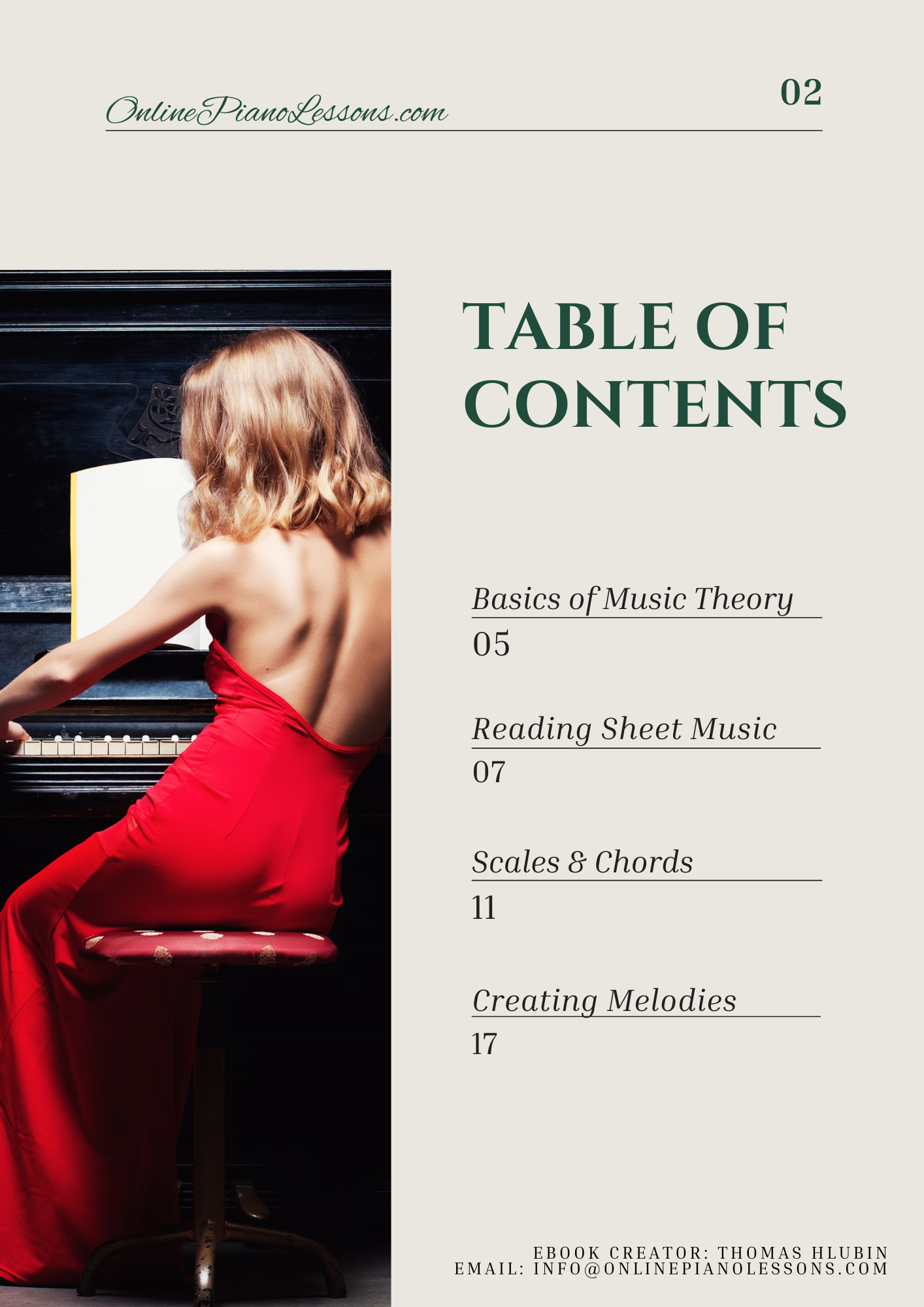If you’ve ever listened to blues, rock, or jazz and noticed a bright, soulful sound with a touch of tension, you’ve probably heard the Mixolydian scale in action. This scale is one of the seven musical modes, and it’s one of the most commonly used because of its versatility and expressive tone. In this guide, we’ll explore what Mixolydian scales are, how they work on the piano, and why every musician should understand this fascinating mode.
What Are Mixolydian Scales?
The Mixolydian scale is the fifth mode of the major scale. That means if you take any major scale and start on its fifth note, you’ll be playing in the Mixolydian mode.
For example, take the C major scale:
C – D – E – F – G – A – B – C
If you start and end on the fifth note, G, you get the G Mixolydian scale:
G – A – B – C – D – E – F – G
Notice the difference? The F in this scale is a whole step lower than the F# in the regular G major scale. That one flattened seventh note changes the entire character of the scale, giving it that signature bluesy or rock sound.
The Formula of the Mixolydian Scale
The Mixolydian scale follows this simple pattern of whole and half steps:
W – W – H – W – W – H – W
If you compare it to the major scale pattern (W – W – H – W – W – W – H), you’ll notice the only difference is the lowered 7th note. This flattened seventh (♭7) gives the Mixolydian its unique personality—major, but with a bit of attitude.
Let’s build one starting from D:
D – E – F# – G – A – B – C – D
This is the D Mixolydian scale, which has the same notes as G major, but centers around D.
Mixolydian Scales vs. Major Scales
At first, the Mixolydian scale might sound similar to the major scale because it shares the same bright, open sound. But the lowered seventh note adds a subtle tension that makes it perfect for styles like funk, blues, and rock.
For instance:
- G Major Scale: G – A – B – C – D – E – F# – G
- G Mixolydian Scale: G – A – B – C – D – E – F – G
That F instead of F# completely changes the mood. It gives the scale a slightly unresolved, “cool” feel—major in tone, but not overly sweet or predictable.
When you hear songs like “Sweet Home Alabama” by Lynyrd Skynyrd or “Norwegian Wood” by The Beatles, you’re hearing the Mixolydian scale at work.
What Makes the Mixolydian Sound Unique?
The Mixolydian scale has a sound that’s both familiar and adventurous. It’s built on the same foundation as a major scale, but that flattened seventh creates a tension that gives the mode its distinctive flavor.
When played on the piano, Mixolydian scales have a smooth, soulful sound that works beautifully for both melody and harmony. They often evoke feelings of freedom, groove, and relaxed energy—making them ideal for improvisation, composition, and accompaniment.
Musicians love the Mixolydian mode because it’s expressive without sounding too dark or too bright. It’s perfectly balanced between the two worlds.
How to Play Mixolydian Scales on Piano
Let’s start with the C Mixolydian scale, one of the easiest to play on the piano.
To build it:
- Start on C.
- Play all the white keys until you reach the next C, but flatten the seventh note (B → B♭).
- The notes are: C – D – E – F – G – A – B♭ – C
You can apply this pattern to any root note using the formula:
1 – 2 – 3 – 4 – 5 – 6 – ♭7 – 1
Here are a few more examples:
- D Mixolydian: D – E – F# – G – A – B – C – D
- E Mixolydian: E – F# – G# – A – B – C# – D – E
- A Mixolydian: A – B – C# – D – E – F# – G – A
Practice these Mixolydian scales slowly on your piano, focusing on smooth finger transitions and even rhythm. Once comfortable, try improvising small phrases or melodies using only the notes from the scale.
How to Use Mixolydian Scales in Music
There are endless ways to incorporate Mixolydian scales into your piano playing. Here are a few ideas:
- Improvisation over dominant 7th chords – The Mixolydian mode fits naturally over dominant 7th chords (like G7, D7, etc.) because of its flat 7th.
- Blues and rock progressions – Many classic progressions use the Mixolydian mode to get that soulful, bluesy edge.
- Funk grooves and jazz solos – Pianists often use the Mixolydian mode for its smooth, groove-friendly sound.
- Modal composition – Instead of thinking in terms of major or minor keys, build a song or section around the Mixolydian sound for a fresh, open vibe.
A simple chord progression in G Mixolydian, for example, might be:
G – F – C – G
This creates a rich, full sound that feels both grounded and free-flowing—a hallmark of the mode.

Why Every Pianist Should Learn the Mixolydian Scale
Learning the Mixolydian scale gives pianists more than just new notes to play—it opens up a whole new way to think about melody and harmony.
Here’s why it’s worth mastering:
- Improves ear training – The Mixolydian’s unique tone helps you recognize modal sounds by ear.
- Expands improvisation skills – Great for jazz, rock, and blues solos.
- Strengthens technique – Practicing new patterns builds finger control and agility.
- Enhances creativity – Offers a new palette of sounds for composition.
- Builds harmonic awareness – Teaches how dominant 7th chords and modal harmony work together.
Even beginners can benefit from adding Mixolydian scales to their daily piano routine—it’s one of the most practical and musically rewarding modes to learn.
Mixolydian Scales in Different Genres
You’ll hear the Mixolydian mode in a wide variety of music styles:
- Rock: “Sweet Home Alabama” (Lynyrd Skynyrd), “Hey Jude” (The Beatles)
- Jazz: Miles Davis and Herbie Hancock frequently used Mixolydian improvisations.
- Funk: Stevie Wonder’s songs often weave Mixolydian melodies into their grooves.
- Pop: Many pop songs use the mode subtly for catchy hooks and choruses.
Try playing along with songs in the Mixolydian mode on your piano—you’ll start to internalize the sound and feel of the scale.
Tips for Practicing Mixolydian Scales
- Practice in every key: Get comfortable transposing the formula to all twelve keys.
- Focus on smooth transitions: Aim for evenness in tone and dynamics.
- Improvise freely: Don’t just run up and down the scale—use it to create short, expressive phrases.
- Play with backing tracks: Hear how the Mixolydian scale interacts with dominant 7th chords.
- Combine with chords: Use the mode to build chord progressions and experiment with reharmonization.
By integrating Mixolydian scales into your regular piano practice, you’ll develop a deeper understanding of modal harmony and melodic color.
Final Thoughts
The Mixolydian scales are among the most fun and rewarding modes to explore on the piano. Their bright yet bluesy tone makes them perfect for countless musical genres—from rock to jazz to funk. Whether you’re composing, improvising, or simply expanding your scale knowledge, mastering the Mixolydian scale will make your playing sound more expressive, confident, and musically mature.
So the next time you sit down at your piano, try experimenting with this powerful mode—and experience the unique groove that only the Mixolydian scale can deliver.
FAQ About Mixolydian Scales on the Piano
Q: What makes a scale Mixolydian?
A: The Mixolydian scale is a major scale with a lowered 7th note, creating a dominant, bluesy feel.
Q: How is the Mixolydian scale used in music?
A: It’s commonly used over dominant 7th chords in blues, rock, funk, and jazz to create rich, expressive melodies.
Q: Is the Mixolydian scale major or minor?
A: It’s closer to a major scale but has a slightly darker, more soulful sound due to the flat 7th.
Q: Can beginners learn the Mixolydian scale?
A: Absolutely! It’s one of the most accessible modes and a great step beyond the major and minor scales.
Q: Why should pianists learn the Mixolydian scale?
A: It builds versatility, improves improvisation, and adds new tonal colors to your playing.



 Hi, I'm Thomas, Pianist Composer,
Hi, I'm Thomas, Pianist Composer,  I love playing piano, creating new melodies and songs, and further developing my online piano course and making updates/additions to my site OnlinePianoLessons.com!
I love playing piano, creating new melodies and songs, and further developing my online piano course and making updates/additions to my site OnlinePianoLessons.com!  Now that is what I call fun!
Now that is what I call fun!
